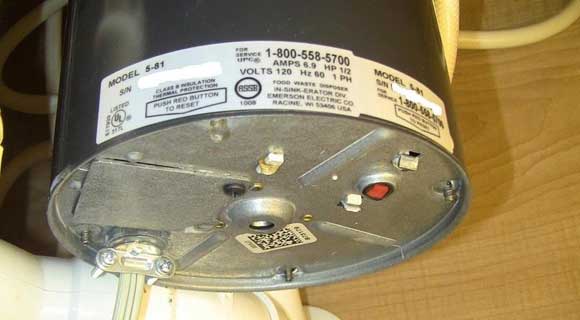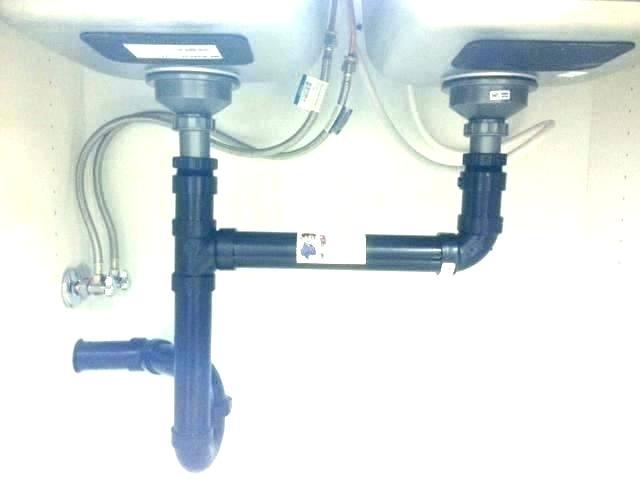Simple Ways to Repair a Leaky Waste Disposal Unit
Simple Ways to Repair a Leaky Waste Disposal Unit
Blog Article
The article listed below pertaining to Why Is My Garbage Disposal Leaking From the Bottom? is absolutely entertaining. Try it and make your own personal assumptions.

Waste disposal unit are crucial kitchen appliances that assist in dealing with food waste successfully. Nevertheless, a leaking garbage disposal can be an aggravating and untidy issue to manage. Thankfully, numerous leaks can be dealt with quickly with a few simple actions. In this post, we will review exactly how to fix a dripping waste disposal unit successfully.
Introduction
Waste disposal unit are mounted under cooking area sinks and are created to shred food waste right into smaller pieces, allowing it to pass through the pipes system quickly. While these devices are generally trustworthy, leakages can happen in time because of wear and tear, loose connections, or damage to the unit.
Step-by-Step Guide to Taking Care Of a Dripping Waste Disposal Unit
Turn Off the Power
Before trying any kind of repairs, guarantee that the power to the garbage disposal unit is switched off to stop the danger of electric shock.
Situate the Leak
Identify the exact area of the leakage and identify the reason
Tighten Connections
Make use of a wrench to tighten up any loosened links between the disposal device and the pipes system.
Replace Seals or Gaskets
If the leak results from used seals or gaskets, eliminate the old parts and change them with brand-new ones.
Patching Cracks or Holes
For cracks or holes in the disposal unit, usage epoxy or a suitable patching material to seal the damaged location.
Identifying the Resource of the Leakage
Before trying to fix a dripping waste disposal unit, it is necessary to identify the resource of the leak. This can normally be done via aesthetic evaluation or by conducting basic examinations.
Visual Inspection
Examine the garbage disposal system thoroughly for any indicators of water leakage. Pay close attention to areas around seals, gaskets, and link points.
Examining for Leaks
One means to check for leakages is by running water via the disposal unit and checking for any noticeable indications of leakage.
Common Reasons For Leakages in Trash Disposals
Worn Seals and Gaskets
Seals and gaskets play a critical role in preventing water from leaking out of the garbage disposal. In time, these parts can deteriorate, leading to leaks around the disposal system.
Loose Links
The links between the garbage disposal and the pipes system can become loosened over time, creating water to leakage out during operation.
Cracks or Holes in the Disposal Unit
Physical damages to the garbage disposal, such as splits or openings in the real estate, can additionally lead to leakages.
Tools and Materials Needed for Repairing a Leaking Waste Disposal Unit
Before beginning the repair work procedure, gather the required devices and products, including a screwdriver, flexible wrench, plumbing professional's putty, replacement seals or gaskets, and epoxy or patching material for repairing splits or openings.
Evaluating the Waste Disposal Unit After Repair Service
As soon as the repair service is full, examine the garbage disposal by running water through it to ensure that the leakage has actually been dealt with.
Preventive Upkeep Tips to Prevent Future Leakages
To avoid future leaks, it is vital to perform regular upkeep on your waste disposal unit. This includes keeping it tidy, avoiding placing non-food things or hard items down the disposal, and periodically checking for leaks or other concerns.
Final thought
Finally, taking care of a dripping waste disposal unit is a fairly straightforward process that can be finished with fundamental tools and products. By following the actions outlined in this short article and practicing precautionary maintenance, you can maintain your waste disposal unit in good working problem and avoid pricey repair work in the future.
What to Do About a Leaking Garbage Disposal
A leaking garbage disposal often goes unnoticed until you confront a sopping cabinet, a foul-smelling puddle, or an audible drip-drip-drip from the unit. The fix can be frustrating, too, because the leak can stem from a number of components in the system. Fortunately, with a little sleuthing, you can zero in on the leak and—depending on the exact location—stop the icky oozing and repair the component that caused it. Worst case scenario, if it turns out that the garbage disposal must be replaced, installing a new one is a reasonable do-it-yourself task for those with basic plumbing skills. Read on to keep the cash you’d otherwise hand over to a pro.
Prepare to find the leak
Prior to testing the garbage disposal for leaks, unplug it at the wall outlet and turn off the power from the breaker box to prevent electrical shock. Then insert a watertight sink stopper into your sink drain and wipe the unit dry with a clean cloth. In any handy container, mix a few drops of food coloring into a few cups of water, and pour the dyed water onto the sink stopper to help you locate the leak.
Investigate the source
the top, where the disposal meets the sink drain the side, where the dishwasher hose or main drain pipe connects to the disposal or the bottom of the unit Inspect each of these locations while gliding a light-colored rag over the unit; the dyed water will readily show on the rag and reveal the location of the leak. If a leak isn’t immediately apparent, remove the sink stopper and pour a few more cups of dyed water down the sink drain, then check for leaks again. Leaks near the top of the unit are more likely to show themselves while the sink is plugged, while side and bottom leaks are more noticeable while the sink is unplugged.
The metal sink flange that sits directly inside the sink drain is typically sealed around the top with plumber’s putty (a clay-like sealant) and then secured from under the sink with bolts. If the plumber’s putty deteriorates, or the bolts loosen, the flange can no longer form a watertight seal between the sink drain and the disposal—which could cause a leak at the top of the unit.
To reseal the leaky flange, you must first detach the garbage disposal. Start by loosening the screws securing the main drain pipe to the disposal, then loosen the screws in the metal clamp securing the dishwasher hose to the disposal and detach the drain pipe and dishwasher hose from the disposal. Loosen the screws in the mounting ring that connects the disposal to the metal mounting assembly beneath the sink, then pull down the disposal and carefully set it on a clean, dry surface. Loosen the bolts in the mounting assembly with a wrench, then pull down the mounting assembly and set it near the disposal.

I was brought to that article on How to fix a pretty consistent leak from my garbage disposal through a good friend on our other web address. Do you know another individual who is intrigued by the topic? Be sure share it. Thank you so much for taking the time to read it.
Show Details Report this page